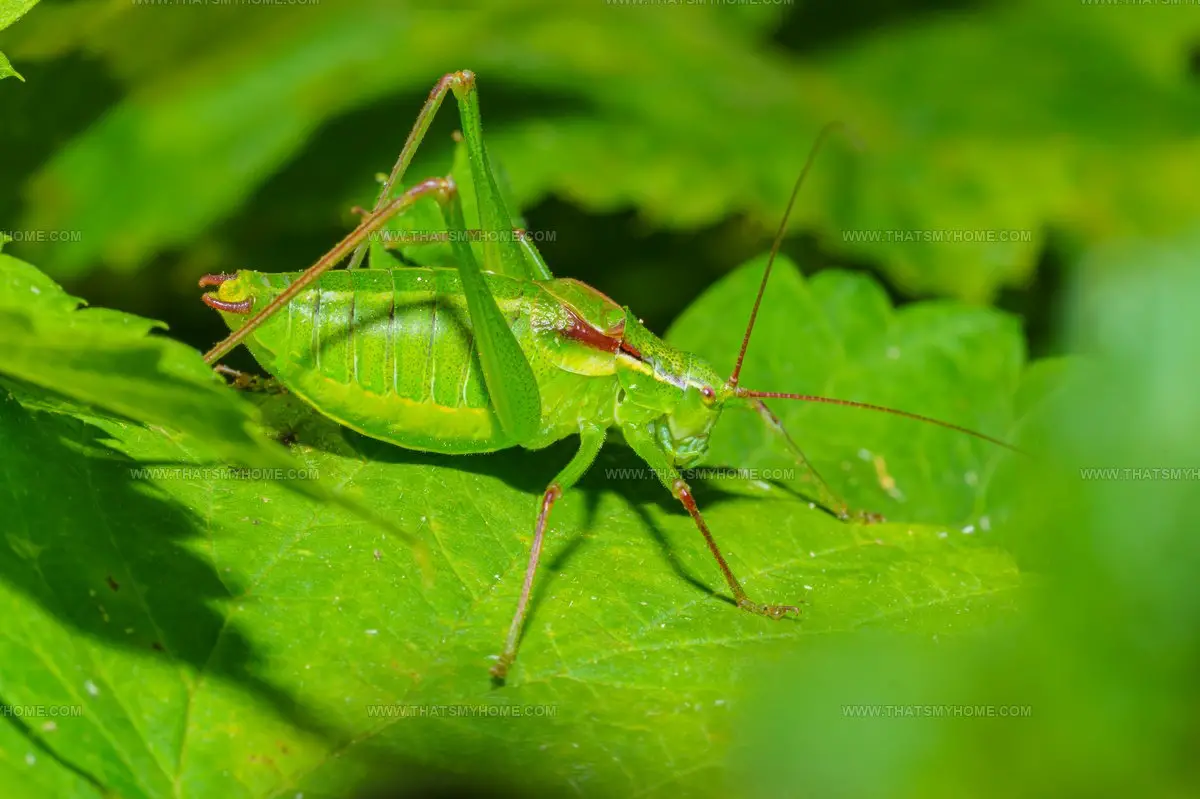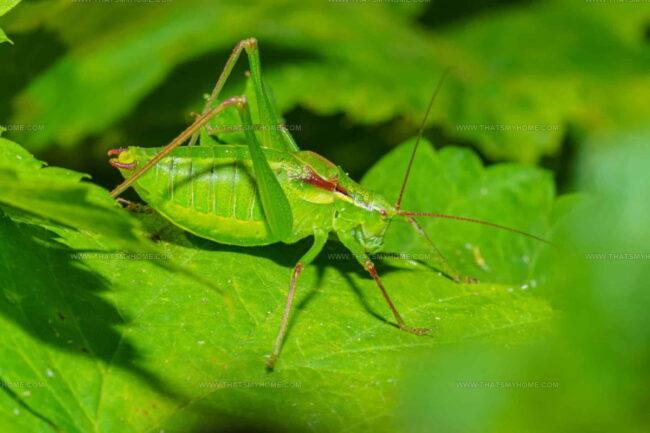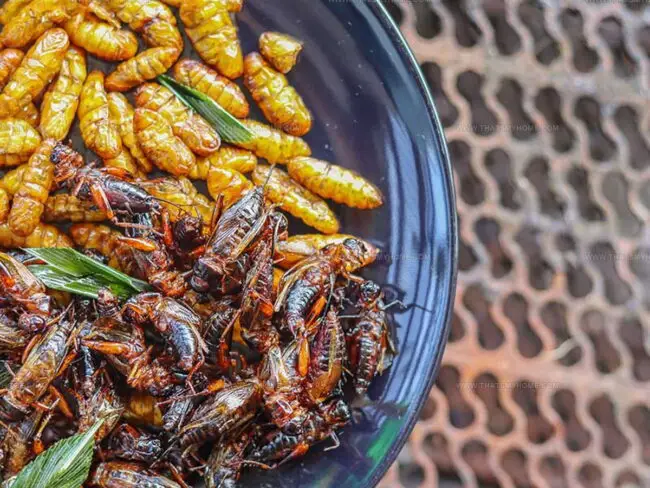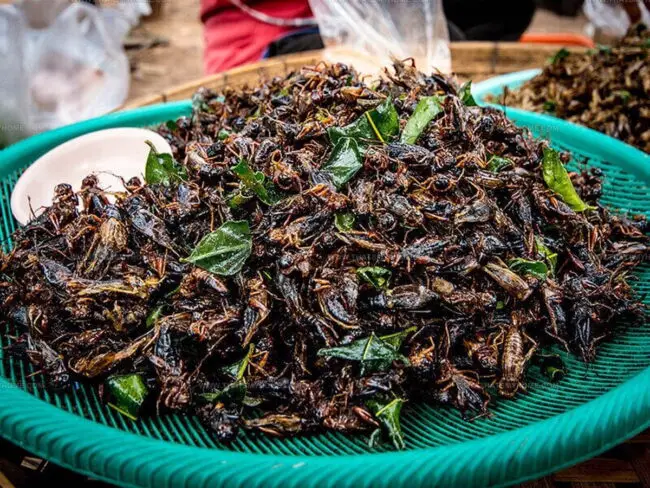What Do Crickets Taste Like? Unveiling Nature’s Crunchy Snack
Edible crickets have been capturing global attention as a sustainable protein source that's gaining serious momentum.
Nutritionists and food innovators recognize these tiny insects as a potential game-changer in our dietary landscape.
Protein-packed and environmentally friendly, crickets represent more than just a passing culinary trend.
Curious eaters wonder about the sensory experience of consuming these crunchy critters.
Cultural practices around the world have long embraced cricket consumption, challenging Western dietary norms.
Adventurous food enthusiasts increasingly seek alternative protein options that minimize environmental impact.
Your taste buds are in for a surprising journey that goes beyond traditional protein sources.
Let's uncover the delicious secrets of these remarkable little insects.
Basic Facts About Crickets
Crickets belong to an insect group close to grasshoppers, with scientists documenting more than 900 different types.
Members of the Gryllidae cricket family spread across wide spaces from northern Alaska down to South America's lowest point.
People around world see crickets as symbols bringing good luck, showing up often in stories and tales.
Walt Disney's Pinocchio introduced Jiminy Cricket, perhaps cricket characters' most famous representative in fiction.
Small creatures face many challenges in nature's ecosystem.
Birds and bears hunt crickets as part of their regular meals.
Pet owners choose crickets as food for lizards and spiders.
Some human cultures also enjoy eating these tiny insects, with deep-fried crickets becoming a favorite street snack in Southeast Asian countries.
Flavor of Eating Crickets
Crickets boast a unique taste profile with nutty undertones and a subtle smokiness.
Their flavor carries a gentle sharpness at the end of each bite, while delivering a rich umami sensation that becomes more intense when roasted.
Crickets truly shine as a tasty treat!
Comparing crickets to chicken seems like a default description for unfamiliar flavors.
Most chicken, particularly white meat, has such a mild taste that people often use it as a generic reference point for unknown food experiences.
Basically, if something seems mysterious, we default to saying it tastes like chicken!
Should You Eat More Crickets?
Quick and easy solutions often seem hard to find when balancing a busy lifestyle with health-conscious choices.
Nutrition store shelves overflow with countless supplements and shakes, but many miss a powerful protein source hiding in plain sight: crickets.
These small insects come in delicious, ready-to-eat options that pack serious nutritional punch.
Survival shows might dramatize insect eating as something extreme or desperate, but their dramatic portrayal misses the real story.
Entomophagy - eating insects - offers more than just survival food. Crickets represent a clean, healthy protein source with deep roots in many cultures.
Cultures worldwide have long celebrated these tiny creatures as a nutritious and tasty snack. Pre-Columbian societies understood their value long before modern nutrition trends emerged.
Crickets bring remarkable benefits beyond simple sustenance, connecting us to ancient food traditions while providing excellent nutrition.
Cricket Appearance Details
Crickets often get confused with grasshoppers, despite being different insects.
These bugs have rounded heads, long antennae, and cylindrical bodies with extra-long back leg thighs.
Most crickets living in the United States sport dark colors like black or brown, though some rare species appear green.
Bull crickets belong to a special group containing some massive cricket species that stretch up to two inches long.
Environmental Impact of Cricket Farming
Cricket protein packs a powerful nutritional punch:
Crickets grow super fast, reaching maturity in just six weeks.
These tiny protein producers need minimal resources - only 1/12th of feed and 1/200th of water compared to cows. Their protein production comes with almost zero carbon impact.
Cooking with crickets allows easy flavor mixing. Chefs can blend these protein sources with favorite spices, creating rich meat-like tastes that enhance typical dishes.
Do Crickets Taste Like Other Bugs?
Crickets taste like roasted or fried ants, minus the slightly bitter or burnt flavor at the end.
Just like other animals and plants, insects have unique flavors, but they also share many traits across different groups.
Regular crickets have a nutty and roasted taste that matches closely with other jumping insects like bush crickets, katydids, locusts, and grasshoppers.
Members of the orthoptera order all share similar wing structures.
Some other insect groups, such as arachnids, often remind people of seafood flavors like crab or shellfish.
Raw vs. Roasted Crickets
Crickets from farms come with safety guarantees, while wild crickets might carry risks and unwelcome guests depending on what they eat.
Complex breeding processes explain why cricket protein remains costly right now.
Societies across different continents have welcomed these tiny protein powerhouses for countless generations.
Cooking methods like roasting typically enhance cricket taste and overall eating experience.
Biblical records show John the Baptist's unusual diet, which included locusts alongside wild honey.
Scripture describes his clothing as camel hair with a leather belt, noting his menu without clarifying cooking methods for his insect meals.
Different Ways to Eat Crickets
Buzz has been growing around consuming insects, especially crickets, due to their impressive nutritional profile. Scientific reports from publications like the New York Times highlight how these small creatures pack serious health benefits.
Researchers point out crickets contain high levels of important nutrients such as:
Multiple cricket-based food options now exist for anyone wanting to add insect protein to their meals. Popular choices include:
When hunger strikes and you need a quick nutrition boost, consider reaching for cricket-based foods instead of traditional supplements or protein shakes!
Is Eating Crickets Good for You?
Crickets pack a powerful nutritional punch with all nine essential amino acids and high protein content (20 grams per 100 grams).
Packed with minerals, these little insects contain up to 13 grams of iron, calcium, and fiber per 100 grams.
Chitin found in crickets works as a probiotic, supporting better digestive wellness.
Crickets are emerging as a smart, budget-friendly, and sustainable snack option.
Seeking a complete protein source that's gentle on your stomach and wallet?
Crickets might be your answer!
With 20% protein and 13% fiber, these tiny creatures offer more iron than beef.
While Africans have enjoyed crickets for thousands of years, Western cultures are now catching on to this nutritious treat.
Crickets stand out as an incredibly healthy choice for fueling your body before or after workout sessions.
Can You Eat Crickets Alive?
Wild crickets pose health risks and should not be eaten raw.
Potential diseases and harmful bacteria make them unsafe for consumption.
Commercial cricket farms provide a safer alternative for insect eating.
Brave food enthusiasts can sample live crickets from reputable commercial sources.
Strict farming standards ensure these insects meet safety guidelines.
Wild crickets carry unknown bacterial threats that could harm health.
Cooking makes crickets more appetizing and eliminates dangerous microorganisms.
Culinary experts recommend preparing crickets through heat treatment for the best and safest experience.
Can Eating Crickets Make You Sick?
Munching on crickets won't cause health problems since these insects have been part of human diets for centuries and are even referenced in ancient texts.
Make sure you purchase crickets from trustworthy sellers and always cook them thoroughly!
Crickets serve as a common protein source in several African and Asian nations such as Nigeria, Thailand, Cambodia, and Democratic Republic of the Congo.
Frying crickets provides a safe and delicious way to enjoy these nutritious insects.
Fried crickets pack a serious protein punch, delivering 20 grams of protein per 100 grams of insects.
Do Crickets Taste Like Snack Chips?
Fried crickets deliver a snack experience just like crunchy chips. Salt and oil create a crispy coating that matches classic chip textures.
Munching on these tiny insects brings out a smoky, nutty taste that feels familiar to chip lovers. Something special happens when crickets hit hot oil - they turn into a protein-packed treat with a flavor close to shrimp-seasoned roasted chips.
Their crispy crunch matches potato chips, but with a healthier nutritional profile packed with protein instead of empty carbohydrates. These small creatures transform into a surprisingly delicious snack that challenges typical eating habits.
Crisp and savory, fried crickets offer an unexpected alternative to standard chip options.
Do Crickets Remind You of Popcorn?
Crickets pack a delightful taste experience with notes reminiscent of almonds and popcorn. Their flavor profile blends smoky and salty hints alongside subtle shrimp and nutty undertones.
Snackers might enjoy comparing cricket munchies to a unique blend of familiar tastes - think shrimp-seasoned popcorn with a nutty twist and rich smokiness. Crunchy and satisfying, these tiny insects offer a surprising flavor journey that challenges typical snack expectations.
Crickets deliver a complex taste that moves beyond simple crunchiness, mixing savory elements that dance across your taste buds. Salt and smokiness merge with delicate nutty whispers, creating a sensory adventure for adventurous eaters.
Munching on crickets feels like discovering a secret flavor world hidden within these small, protein-packed creatures. Each bite brings a mix of familiar and unexpected tastes - from almond-like richness to shrimp-inspired saltiness.
Crickets transform snacking into an exciting culinary exploration, inviting you to experience food from a completely different perspective.
Do Crickets Have a Shrimp Taste?
Crickets taste like smoky, salty shrimp!
Munching on these tiny insects brings out a flavor that reminds you of shrimp soaked in hoisin or soy sauce.
Their nutty undertones echo the richness of almonds.
Some people even compare their taste to popcorn or crispy chips.
Crickets pack a powerful shrimp-like punch!
Their smooth and nutty profile blends with salty and smoky notes to create an incredible snack.
Crunchy and packed with umami, these little insects deliver a surprisingly delectable eating experience.
Do Crickets Taste Like Chicken?
Crickets boast a mild taste that doesn't mirror chicken's flavor.
Instead, they offer a complex blend of nutty and smoky notes.
Their flavor profile carries hints of saltiness with an underlying umami sensation similar to shrimp swimming in soy hoisin sauce.
While not exactly like chicken, crickets provide a unique taste experience that surprises many first-time samplers.
Flavor of Roasted Crickets
Roasted crickets boast a smoky seafood taste, blending shrimp-like notes with nutty and sharp undertones.
Their flavor profile resembles salty, dry chips with a popcorn-like crunch.
Roasted crickets serve as a nutritious snack choice.
Fans of crispy seafood might enjoy these crunchy bites.
They offer a delightful mix of shrimp-like zest and rich nutty hints, similar to hoisin-dipped seafood treats!
Reasons to Avoid Eating Crickets
Certain compounds might lower nutrition in plant-based foods such as rice or flour.
Specific substances like phytic acid, tannins, and lectins fall into this category.
Researchers have detected small quantities of these compounds within insect exoskeletons made of chitin.
What Dried Crickets Taste Like
Dried crickets boast a nutty and smoky taste with a hint of shrimp-like flavor.
Their salty profile reminds you of shrimp-flavored chips or popcorn.
Hints of soy sauce add an astringent touch to their overall taste.
When you bite into these crunchy insects, you'll experience a complex blend of savory notes that surprise and delight your taste buds.
Nutty undertones mix with smoky hints, creating a unique snacking experience that goes beyond typical protein sources.
Shrimp-like nuances dance on your tongue, making dried crickets an unexpectedly delicious treat.
Salt levels complement the deep, rich flavors, ensuring each bite delivers a satisfying crunch and memorable taste sensation.





Mary Ellen
Expertise
Education